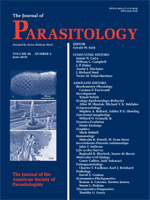Adults of Sphaerirostris picae (Rudolphi, 1819) Golvan, 1956 are described from European magpie, Pica pica Linnaeus (Corvidae), collected in 2008 from wooded areas near the northern Iranian town of Tonekabon by the southern shores of the Caspian Sea. Other specimens also were collected from Corvus cornix Linnaeus, Corvus corone Linnaeus, and Corvus frugilegus Linnaeus (Corvidae) in the same location, as well as from some of these hosts in other locations. Our specimens had 31–38 proboscis hook rows on the ovoid anterior proboscis and 27–36 spine rows on the cylindrical- to cone-shaped posterior proboscis, each with 8–10 hooks and 2–5 spines per row, respectively. They are distinguished from those of all other species of the genus by having a unique prominent expansion of the dorsal inner receptacle wall, called the receptacle process (RP), anteriorly into the anterior proboscis and by the presence of longitudinal alveolar lobes throughout the receptacle and proboscis. The RP is described using histological sections. Sphaerirostris picae is further distinguished from 2 closely related species, namely, Sphaerirostris lancea (Westrumb, 1821) Golvan, 1956 and Sphaerirostris pinguis (Van Cleave, 1918) Golvan, 1956, by characteristics of proboscis armature, position of female gonopore, and other reproductive system and receptacle features. Histological sections revealed damage to host intestinal tissue.
BioOne.org will be down briefly for maintenance on 17 December 2024 between 18:00-22:00 Pacific Time US. We apologize for any inconvenience.
How to translate text using browser tools
1 June 2010
Redescription of Sphaerirostris picae (Acanthocephala: Centrorhynchidae) From Magpie, Pica pica, in Northern Iran, with Special Reference to Unusual Receptacle Structures and Notes on Histopathology
Omar M. Amin,
Richard A. Heckmann,
Ali Halajian,
Ali Eslami
ACCESS THE FULL ARTICLE

Journal of Parasitology
Vol. 96 • No. 3
June 2010
Vol. 96 • No. 3
June 2010




